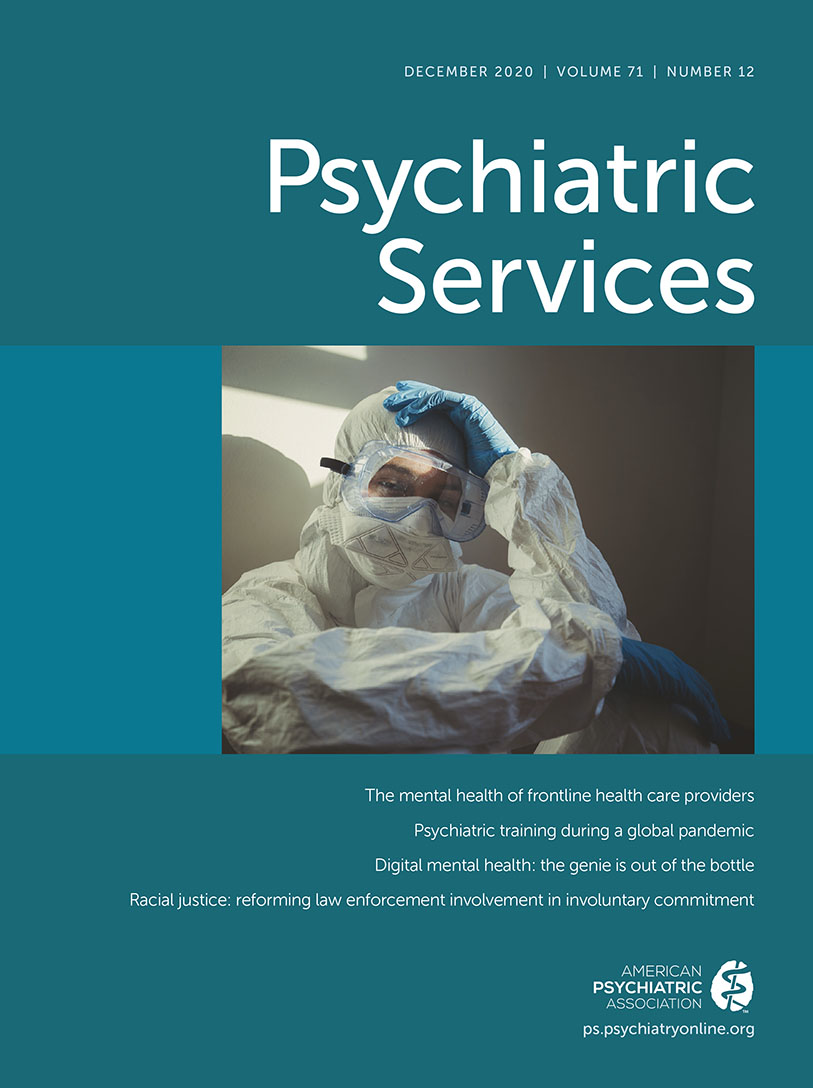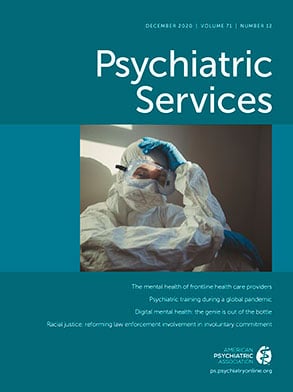IN REPLY: Drs. Li and Mathis provide historical context and raise important issues regarding the Inpatient Psychiatric Facilities Quality Reporting (IPFQR) seclusion and restraint data. Monitoring and improving health care quality and safety require reliable, detailed data that enable meaningful comparisons of facilities within and between regions.
Simple improvements would make the IPFQR facility-level data more useful. For example, having hospitals report number of staffed psychiatric beds would ease comparison of facilities of similar size and help make sense of IPFQR data for facilities with wildly inconsistent counts of patient days due to erroneous reporting of patient hours instead of patient days or data entry errors. A facility with 100 beds, for example, could have 35,000 inpatient days in a year but clearly would not have 350,000. The Substance Abuse and Mental Health Services Administration (SAMHSA) collects detailed information on mental health facilities, including types of insurance accepted and age groups treated, but merging SAMHSA and IPFQR data is extremely difficult because consistent, shared identifiers are lacking. As Li and Mathis note, including more facility characteristics in the IPFQR data would facilitate meaningful comparisons.
Ideally, IPFQR data would be collected at the unit level. The National Database of Nursing Quality Indicators (NDNQI) collects unit-level seclusion and restraint data from several psychiatric unit types, including child, adolescent, adult, geriatric, behavioral health, and dual diagnosis. This allows comparisons between similar units within and across hospitals and between hospitals on the basis of seclusion and restraint rates adjusted for hospital unit composition (
1).
I echo the recommendation of Li and Mathis to include patient demographic data in the IPFQR data. There is evidence that odds of seclusion and mechanical restraint in response to injurious assault by a patient differ between patients admitted voluntarily and involuntarily and that duration of these episodes differs between females and males (
2). Li and Mathis note evidence of racial disparity in use of restraint (
3). Demographic information for each hospital’s patient population should be summarized in the IPFQR data to allow for more careful comparisons between facilities.
In addition, hospitals should report patient demographic information for each seclusion and mechanical restraint episode and, crucially, the duration of each episode. Such data would allow CMS to report facilities’ seclusion and restraint episodes per 1,000 patient days and provide summary statistics (e.g., percentiles, maximum) for the durations of these episodes in each facility. Episode-level data would also allow researchers to study patient-level correlates of seclusion and restraint duration and identify inequities. Reporting data at this level of granularity is not infeasible; many hospitals report such data quarterly for their participating psychiatric units to the NDNQI. The NDNQI data are proprietary, however, and limited to seclusion and restraint in response to injurious assault. Collecting similarly detailed, nationwide data on all seclusion and mechanical restraint episodes and making these data available to the public would be an important step toward improving the quality and safety of U.S. psychiatric care.

